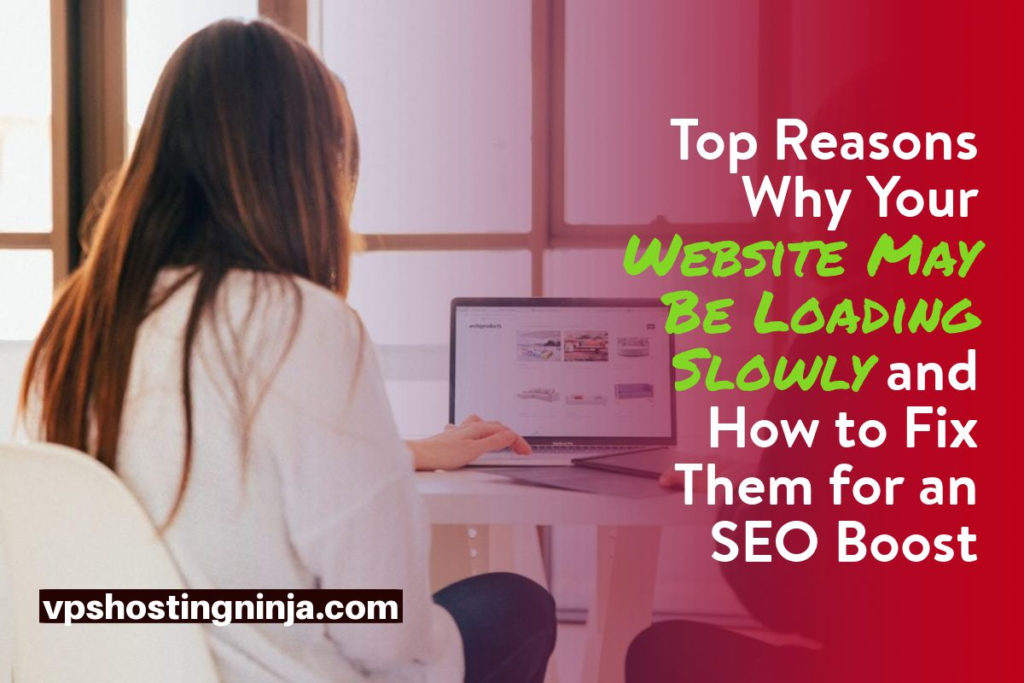Top Reasons Why Your Website May Be Loading Slowly and How to Fix Them for an SEO Boost
Even if you have done a terrific job in building a website and done everything you could to drive traffic to it, you may still not end up in being able to make the conversions you want simply because your website takes forever to load and users just do not have the patience to stick around.
What seems to be an eternity to users may actually just be a few seconds. According to https://www.forbes.com, a low loading website not only costs you potential sales but also negatively impacts your SEO as Google uses page speed as an important factor for determining page rankings.
Another report, also by Forbes suggests as many as 40% of users are likely to abandon the site if it does not load within three seconds. A quick look at some of the leading causes of slow loading websites:
Uncompressed Images
The loading time of a website is affected significantly by the quality and the dimensions of the images.
While it is great to have good quality images, if the file size is more, it will make your webpage open slower.
Image file size optimization is the obvious solution, however, since your website is likely to have hundreds if not thousands of images, instead of manually optimizing them, using plugins can make the job simple but in a different kind of way.
For example, you can use a jQuery Lazy Load plug-in to allow only the images appearing on the part of the page that the user is viewing to load.
However, you should also take care to optimize the file size of the images by using other plugins that can effectively compact them without affecting their visual quality.
The WP plug-in can do the job automatically as and when you add images to your website so you need not remember it as a special exercise.
Redundant Plugins
If you have a WordPress website, there is every chance that you would have been dazzled by the possibilities of the thousands of plugins that are available for virtually all functionality.
It is very easy to get overwhelmed and download and install a lot of plugins, most of which you do not use at all. The problem is when you have too many plugins installed; it results in an overload for the website and affects its performance.
Also, you need to keep in mind that many of the outdated plugins can be a prime cause for your website slowing down instead of boosting its performance, according to https://socialmarketway.com/.
The best way of resolving this issue is to evaluate carefully what functionalities you really require, retain the plugins you need, and get rid of the rest.
You can use the P3 (Plugin Performance Profiler) to check out the performance of each of the plugins and its impact on the website loading time to help you decide which plugins to discard.
A Homepage That Is Too Busy
The website homepage is the first thing that your visitors normally see, which is why it has to have the best impact.
However, if you try to make it extra impressive with image, graphics, content, widget, and more, you can be sure it is going to negatively impact your page loading speed.
The trick to making a site that wows visitors is to adopt a clean design and the keeping things simple and intuitive for enhanced user experience and a faster loading website.
After all, there is no point in creating a complicated homepage designed to suit every user need if a majority of your users do not get the opportunity to see it.
Changing the WordPress options to display only excerpts instead of the posts in their entirety as well as restricting the number of posts per page to around five to seven can also help to speed up your homepage launch.
Third-Party WordPress Themes That Are Free to Use
A theme that does not cost you money may seem to be the best thing ever; however, even if it does not cost you any money, you can be sure that it will end up being costly in some other way.
Free themes can come with malware and spyware that can easily compromise the security of your WordPress site and also make your site slow since they keep on working in the background.
The best way of not getting trapped in this mess is to use only themes available in the official repository of WordPress or buy a premium theme from a trusted third-party vendor for any special personalization requirements; the cost is typically less than $100, so the expense is not something that you will need to worry about in the long run.
Cheap Web Hosting
For modern businesses, a website is usually the most important marketing and communication channel.
Therefore, it seems strange that after taking a lot of trouble to build a website that not only looks good but packs in all the functionalities you want, to deliver wonderful user experience, you would spoil everything by choosing a web hosting plan that is either free or costs next to nothing.
While it is understandable, you may not have a very deep pocket, you will need to host your website on a plan that can accommodate your traffic without breaking into a sweat, especially when the traffic spikes when you launch a new product or a marketing campaign.
Instead of opting for a free or cheap solution, it is advisable to go in for a plan that gives you adequate bandwidth so that it can handle the traffic without slowing down or refusing to allow the website to load.
Go for a provider with a good reputation for support because in case something does go wrong, you do not want your site to be unavailable while you are filling out forms for getting support.
Conclusion
While all the fixes discussed above are for existing sites that you need to do regularly to optimize the loading time, perhaps the best way of ensuring that you have a site that loads fast is to take care that it coded properly when it is being developed.
Unnecessary or clunky coding can slow down the site as the server has to work more to access and load the page.

